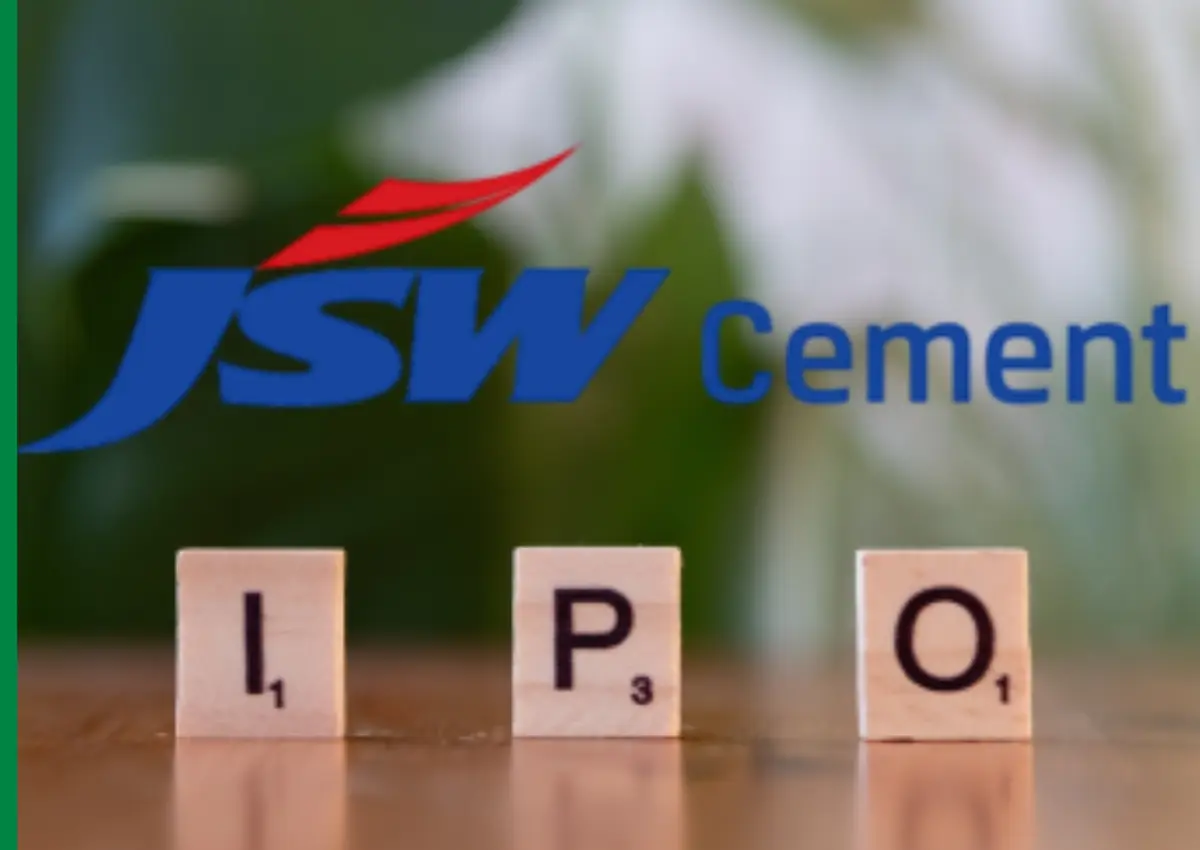The cement sector of India is experiencing a high investor confidence rate as JSW Cement, owned by diversified JSW Group or JSW group headed by Sajjan Jindal is planning to launch its much awaited Initial Public Offering (IPO). As with the issue set to open on August 7, 2025 investors are paying close attention to the grey market premium and dissecting the investment opportunity.
JSW Cement IPO Overview
In its public offering, JSW Cement has sized the issue as a 3600crore IPO, a considered cut in the originally planned 4000crore issue. This primary board IPO is one of the major offerings of the cement industry in 2025.
Essential IPO Parameters
- Issue Size: ₹3,600 crores (reduced from ₹4,000 crores)
- Price Band: ₹139 to ₹147 per equity share
- Face Value: ₹10 per equity share
- Lot Size: 102 shares
- Issue Structure: Fresh issue of ₹1,600 crores + Offer for Sale of ₹2,000 crores
Critical Dates for Investors
- Anchor Investor Bidding: August 6, 2025
- Public Issue Opening: August 7, 2025
- Issue Closing: August 11, 2025
- Allotment Finalization: August 12, 2025
- Listing Date: August 14, 2025 (BSE & NSE)
Grey Market Premium Analysis
In terms of IPO Grey Market Premium (GMP), JSW Cement is performing positively with a state of 19 per share; as of August 5, 2025. This is about 12-13 percent premium to top price band of 147 rupees implying positive sentiment.
GMP Trajectory and Market Sentiment
The gray market activity indicates very high confidence of investors, and the GMP has escalated to 19 on August 5 as compared to zero on August 4. Investors need to bear in mind, however, that grey market premiums are speculative measures and provide no guarantee of post listing performance.
Key GMP Metrics:
- Current GMP: ₹19
- Expected listing gain: 12-13%
- Subject to Sauda rate: ₹1,500
Use of Proceeds: Strategic Growth Investments
JSW Cement has outlined a clear roadmap for utilizing the fresh issue proceeds of ₹1,600 crores:
Capacity Expansion Strategy
- ₹800 crores allocated for establishing a new integrated cement plant in Nagaur, Rajasthan
- This expansion aligns with India’s infrastructure development boom and increasing cement demand
Financial Restructuring
- ₹520 crores designated for debt repayment
- This will strengthen the company’s balance sheet and reduce interest burden
- Remaining funds allocated for general corporate purposes
Company Profile and Market Position
JSW Cement operates within the robust JSW Group ecosystem, benefiting from synergies across various industrial segments. The company has established itself as a significant player in the Indian cement industry.
Key Strengths and Competitive Advantages
- Group Synergies: Access to JSW Group’s integrated business model
- Strategic Locations: Well-positioned manufacturing facilities
- Quality Products: Focus on premium cement grades
- Distribution Network: Established market presence across key regions
Investment Banking Consortium and Market Credibility
The IPO is managed by a prestigious consortium of investment banks, including:
- Kotak Mahindra Capital Company Limited
- Axis Capital Limited
- JM Financial Limited
- Jefferies India Private Limited
- Goldman Sachs (India) Securities Private Limited
- SBI Capital Markets Limited
This strong banking partnership underscores the issue’s credibility and market appeal.
Sector Analysis: Indian Cement Industry Outlook
The Indian cement industry continues to benefit from:
Growth Drivers
- Infrastructure Development: Government’s focus on roads, railways, and urban development
- Housing Demand: Increasing urbanization and affordable housing initiatives
- Industrial Growth: Expansion in manufacturing and commercial construction
Market Dynamics
- Rising raw material costs present challenges
- Consolidation trends creating opportunities for established players
- Environmental regulations driving technological upgrades
Risk Factors and Investment Considerations
Potential Challenges
- Cyclical Nature: Cement demand is closely tied to economic cycles
- Raw Material Costs: Fluctuating coal and other input prices
- Regulatory Environment: Environmental and mining regulations
- Competition: Intense competition from established players
Mitigation Factors
- Strong parent company support
- Strategic capacity expansion
- Focus on operational efficiency
- Debt reduction strategy
Investor Categories and Allocation
The IPO follows standard allocation norms:
- Retail Investors: Up to 35% reservation
- Qualified Institutional Buyers (QIBs): Up to 50% allocation
- Non-Institutional Investors (NIIs): Up to 15% quota
Expert Investment Perspective
Given the current market conditions and company fundamentals, JSW Cement IPO presents a mixed investment proposition. The positive grey market premium indicates investor optimism, while the company’s strategic expansion plans and debt reduction focus demonstrate management’s commitment to long-term value creation.
Factors Supporting Investment
- Established group credentials
- Strategic capacity expansion
- Strong banking consortium
- Positive market sentiment
Cautionary Considerations
- Sector cyclicality
- Market volatility
- Execution risks in expansion plans
Final thoughts
The JSW Cement IPO gives an investor a chance to share the India cement industry growth story. Since it has a decent price range, strategic diversion of proceeds, and favorable early market signs, the security should receive serious consideration by investors having a medium to long-term investment duration.
Nevertheless, it is only prudent that potential investors do due diligence taking into account their risk appetite and portfolio diversification requirements. The grey market premium though encouraging should not be the only factor that should be used in investment decisions.
Since the cement industry in India still remains to be a vital part of the infrastructure development, the strategic positioning of JSW Cement as the part of JSW Group ecosystem may offer long term sustainable competencies in order to create the values.




